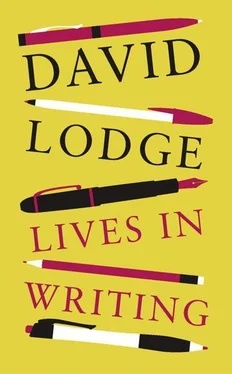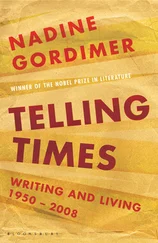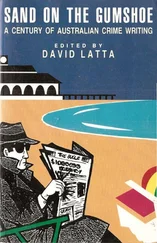Writing a biography of a living person is always a tricky undertaking, and Muriel Spark was no exception. She had been prompted to write Curriculum Vitae to correct what she regarded as misrepresentations of herself in an unauthorised biography by Derek Stanford, her lover and literary collaborator in the years before she became famous, and, as Stannard would soon discover, she was notorious for making imperious demands of her publishers, and frequently threatening to sue others for publishing false reports about her. The pile of documents made accessible to Stannard proved to contain nothing that was personally revealing, and indeed seemed more like a wall designed to conceal her private life. It was unlikely that such a volatile and controlling personality would maintain the promised hands-off stance towards her biography, and so it proved. Although Stannard has maintained a discreet silence on the subject, it is well known that when Spark read his finished manuscript she declared that it was ‘unfair’ to her, and withheld permission to publish it, a ban that was maintained for some time by her literary executor after her death in 2006. How the dispute was resolved we do not know, but this long-delayed book displays no trace of the frustration its author endured: its account of Muriel Spark impresses one as both sympathetic and accurate.
Muriel Spark was born in Edinburgh in February 1918, the final year of the most terrible war the world had ever known, a circumstance she exploited in a brilliant magic-realist story ‘The First Year of My Life’, in which the preternaturally perceptive infant narrator comments caustically but silently on the folly and evil of the adult world in which she finds herself. Muriel’s father Bernard ‘Barney’ Camberg was a Jew, her mother Sarah (‘Cissy’) was according to her daughter half-Jewish, with a Christian mother, though the ambiguity of this lineage was to prove a source of much trouble in Muriel’s later years. There is, however, no reason to doubt her assertion that family life was not noticeably Jewish in matters of diet and ritual observances, that they rarely attended synagogue, and that its general ethos was liberal and secular. Socially they were at the top end of the working class, Barney being a skilled factory worker, and Cissy the offspring of small shopkeepers in Watford in the south of England. She seems to have been an amiable but rather lazy woman who, Stannard startlingly reveals, consumed a bottle of Madeira every day. That fact shows they were not poor, but their accommodation was limited: when Cissie’s widowed mother came to live with them Muriel had to give up her bedroom and slept for five years on a sofa in the kitchen. It is hard to imagine a modern teenager putting up with this for five days, but Spark claimed that she suffered no sense of deprivation. She found her grandmother an object of intense interest and helped uncomplainingly to care for her after she suffered a stroke and became bedridden and demented — experience which later bore fruit in Memento Mori.
Neither of Muriel’s parents, Stannard observes, ‘had the faintest interest in literature’ and nor did her elder brother, Philip, who became an engineer. Her own interest was stimulated and fed primarily through education at the James Gillespie School which she attended from the age of five to seventeen. It was there that she fell into the hands of a teacher called Miss Kay, or, as she later wrote, ‘it might be said that she fell into my hands’ for Miss Kay was the model for Miss Brodie, whose ‘dazzling non-sequiturs’ she would later adapt as a compositional device. She also developed a fruitful friendship with a fellow pupil, Frances Niven, with whom she shared a passionate interest in reading and writing poetry, and made her debut in print at the age of twelve with five poems in an anthology called The Door of Youth . The following year, 1932, she entered a competition open to all Edinburgh schools for a poem on Sir Walter Scott, the centenary of whose death was then being celebrated, and won first prize.
It wasn’t just her family’s limited means that prevented this obviously gifted girl from proceeding to university, for there were scholarships that might have been found for the purpose: Muriel herself had no great urge to do so. She sensed, probably correctly, that the academic study of literature would prevent her from exploring it in her own idiosyncratic way, and was anxious to make herself employable in the economically depressed 1930s. So she enrolled in business-oriented college courses in shorthand typing and précis-writing which stood her in good stead in the years to come, bringing her a variety of jobs that were not always rewarding in themselves but provided invaluable material for fiction (and no doubt helped to form her lucid, economical prose style). Three more years of formal education might have saved her from a disastrous marriage, but even that brought her experience she was able to turn to positive account in fiction. As the narrator of Loitering with Intent , Fleur Talbot, says: ‘everything happens to an artist; time is always redeemed, nothing is lost and wonders never cease.’
The sexual liaisons and intrigues among the teachers and pupils which drive the plot of The Prime of Miss Jean Brodie , were, as Spark admitted, a fictional addition to the reality of her schooldays. Edinburgh in the 1930s was an intensely puritanical society, and premarital sex was simply not an option for a respectable young woman. ‘I never slept with anyone before I got married, because no-one anyway ever asked me,’ she told Stannard. ‘You didn’t. There wouldn’t have been anywhere to go. I wasn’t in that way of life.’ But she had boyfriends, and to the surprise of her friends and the dismay of her father she accepted at the age of nineteen a proposal of marriage from one of them, Sydney Oswald Spark, who was thirteen years older than herself and whom none of them liked or trusted. Why? He had an MA in Mathematics from Edinburgh University which may have impressed her, and she evidently enjoyed being the object of his infatuation, but if sex was a motive it was probably driven more by curiosity than desire on her part. (She told an interviewer in 1974 that she had rushed into marriage because it was then ‘the only way to get sex’.) That ‘Ossie’ as she called him (or later, ‘S.O.S.’) was a non-practising Jew perhaps made him seem a compatible spouse, given her own tenuous sense of Jewish identity; and he offered her an opportunity to see something of the great world, for he intended to go to Southern Rhodesia (now Zimbabwe) on a three-year teaching contract. He did not tell her, however, that he had been unable to hold down a teaching job in Scotland and had been seeing a psychiatrist.
Ossie preceded Muriel to Africa, and they were married there in September 1937. The wedding night was inauspicious — ‘An awful mess. Awful. Such a botch-up,’ she commented years later — but she was soon pregnant, and soon aware too of her husband’s unstable character. She responded to the beauty of the African landscape, and the friendliness of the natives, but the arrogance and philistinism of white colonial society oppressed her, and combined with the increasingly threatening behaviour of her husband to precipitate a depression after her son Robin was born. Before long the Sparks were effectively separated. (Coincidentally another future novelist of distinction, Doris Lessing, was going through similar experience a few hundred miles away, but they were unknown to each other.) By the time the Second World War broke out Muriel was determined to return to the UK where she hoped to arrange for a divorce with custody of her child, and, after leaving Robin in the care of a Catholic convent school and moving to South Africa, she eventually arrived in a war-worn London in March 1944 and joyfully embraced its dangers and austerities (see The Girls of Slender Means ). Her familiarity with the novels of Ivy Compton-Burnett sufficiently impressed an interviewer at the Foreign Office to land her a fascinating job in Sefton Delmer’s ‘Black Propaganda’ department, confusing the German population with radio broadcasts that cunningly mixed truth with invention (see The Hothouse by the East River ).
Читать дальше












